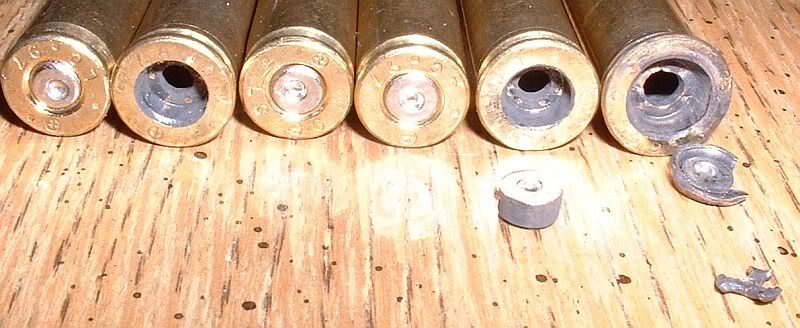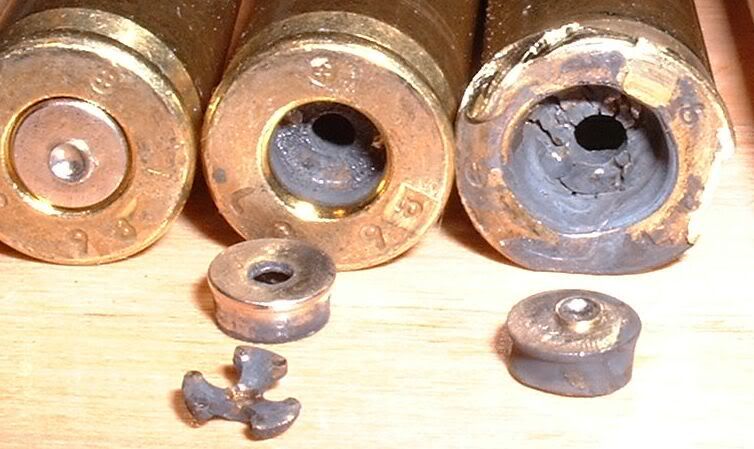Have any of the experienced reloaders noticed any difference in the accuracy of the same load (as far as powder, primer, bullet) in LC brass from different years?
Join the Hide community
Get access to live stream, lessons, the post exchange, and chat with other snipers.
Register
Download Gravity Ballistics
Get help to accurately calculate and scope your sniper rifle using real shooting data.

Install the app
How to install the app on iOS
Follow along with the video below to see how to install our site as a web app on your home screen.
Note: This feature may not be available in some browsers.
You are using an out of date browser. It may not display this or other websites correctly.
You should upgrade or use an alternative browser.
You should upgrade or use an alternative browser.
Any difference in LC brass from different years?
- Thread starter My Toy
- Start date


The biggest difference I have seen in LC brass in my results is between the 223 brass and the 308 brass.


The biggest difference I have seen in LC brass in my results is between the 223 brass and the 308 brass.
Same load and primer between differing years of LC brass manufacture?
Same load and primer between differing years of LC brass manufacture?
No, I introduced another variable, different cartridges.
No, I introduced another variable, different cartridges.
How the hell did you squeeze a .308 load into a .223 case?
The 308 cases all got the same load, different neck pinch.
The 223 cases all got different loads, no neck pinch.
It seems like I spent my life being a "no out of control variables" nazi, but now I am retired.
The 223 cases all got different loads, no neck pinch.
It seems like I spent my life being a "no out of control variables" nazi, but now I am retired.
No, I introduced another variable, different cartridges.
I'm not retired yet and maybe never will be if our political leaders don't stop f*****g with the economy. I was referring to the only variable being the different years of LC brass ( and actually I should have added that the focus of my interest is really 308).
Have any of the experienced reloaders noticed any difference in the accuracy of the same load (as far as powder, primer, bullet) in LC brass from different years?
You have shooters using mixed brass in their AR15s for blasting ammo and shooters who sort by headstamp date, case weight and internal volume for precision accuracy.
The reason people buy Lapua brass is constancy within a given lot, and you will need to work very hard to get this from any mixed brass.
Under the link below is an excerpt from the .308 Win cartridge guide.
.308 Win Cartridge Guide within AccurateShooter.com
Preferred Brass
For a 6BR, there is one clear choice in brass–Lapua, with Norma the only real second choice. For the .308 Winchester, choice of brass is not so simple. Most of the .308 Win precision shooters we’ve interviewed do prefer Lapua brass, but others are very happy with Norma, Winchester, Hornady Match and even Remington. Black Hills uses Winchester-made brass for its match ammo, which is capable of .5 MOA or better in many rifles. The main advantage of Lapua brass is consistency and quality. Case-wall thickness is very uniform and most lots have shown less variation in weight than other headstamps. But Winchester brass performs very well in the .308. And, at $24/100, Winchester costs 40% less than Lapua brass. Even if you can potentially get more loadings out of a Lapua case, Winchester brass offers more bang for the buck. You’ll find a lot of once-fired Federal Gold Medal Match brass available. While it tends to shoot accurately, we’ve found GMM brass is relatively soft compared to Lapua or Winchester, so the primer pockets tend to loosen up after just three or four reloadings.
In addition to commercial brass, many .308 Win shooters reload boxer-primed military cases such as Lake City, IMI, and Hirtenberger. The Lake City Match brass is pretty good. Some lots have been excellent. The standard Lake City fodder is inferior to Winchester. IMI brass has a reputation for being strong, but we advise you only to purchase it new. Some used lots of IMI brass from Israel have been defective. If you are looking for ultimate accuracy, IMI will probably disappoint you, though it’s good for gas guns that are tough on cases.
The most important thing to remember about military brass is that the internal capacity will probably be less than commercial .308 Win brass, because military brass often has thicker webs or casewalls. Montana Marine reports his fire-formed milsurp cases hold 56 grains of H20 on average compared to 58 grains for fire-formed Winchester. Given the reduced capacity of military brass, you should reduce posted max loads by 1.5 grains when loading with Lake City or most other milsurp brass. However, the IMI MATCH brass is closer to commercial brass in internal case capacity (ICC). Kevin Beggs reports: “Fired, my IMI Match brass runs with an ICC of 55.0gr and bumping the shoulder back .001″ will net me an ICC average of 54.0gr. LAPUA runs an average of 54.4gr and Federal runs an average of 54.3gr ICC.”
Last edited:
Have any of the experienced reloaders noticed any difference in the accuracy of the same load (as far as powder, primer, bullet) in LC brass from different years?
I'm willing to bet that LC does not change anything on January 1st. That being said, it's possible that brass can vary during the same given year. Common sense would tell me not to expect the same results from brass made in 1970 vs 2013, but I'm sure the variance is minimal.
I'm willing to bet that LC does not change anything on January 1st. That being said, it's possible that brass can vary during the same given year. Common sense would tell me not to expect the same results from brass made in 1970 vs 2013, but I'm sure the variance is minimal.
This is a very timely thread.
I'm currently running 03 LC LR, and just purchased 200pcs of 08 and 10 LC LR.
When time allows, I'm gonna work up to my current LC LR 03 loads.
My gut tells me there won't be much difference, but I'm gonna start low and work up
anyhow.
I shoot LC LR brass out of my OBR. I never sort it - not by weight, not by year. It consistently holds well under 0.75MOA out to a bit over 800 yds so far. Most days,, with me driving I get 0.5 to 0.6MOA. Much of the time I am hovering +/- 0.5MOA. In better hands, I am sure that accuracy would be both better and more consistent.
Similar threads
- Replies
- 5
- Views
- 580
- Replies
- 20
- Views
- 470
